Stunning Bohemian Jewelry By Marina Shafran
Marina Shafran creates luscious handcrafted artisan jewelry for women who enjoy being in the spotlight. In a world where there’s an abundance of nice jewelry, I love Marina’s artistry, balance, proportion, and commitment to using genuine materials. As these photos show, there’s no faking the beauty of the real thing.
Marina’s passion for handcrafted designer jewelry comes from her long involvement in wearable art and fashion industry.
Here are a few of my favorite pieces from Marina’s shop on Etsy. CLICK PHOTOS TO GO TO PRODUCT INFORMATION.
Baltic Amber Green Fluorite Iolite Gold Ball Post Earrings, $34.99
Amazonite/Pearl Cluster Sterling Fringe Chain Necklace, $439.99
Genuine Pink Topaz, Rhodolite, Garnet & Pearl Necklace, 259.99
Genuine Carnelian and Goldfill Hoop Earrings, $69.99
Genuine Blue Topaz/Moonstone Silver Fringe Necklace, $239.99
Purple Amethyst and Citrine Gold Multi Chain Necklace, $214.99
Well…was I right? Are these colors, stones, and designs not beautiful? You can find Marina’s complete collection here and here.
Love,
sallymandy
Build A Twitter Following for your Etsy Shop

Have you ever thrown a party and been afraid no one would come?
Building a following on Twitter is sort of like that. You want a fabulous scene with lots of guests—people who will eventually connect with what you say, do, or sell.
But how to do this? Following is a list of ideas to help you build your Twitter party. Some I’ve made up and others have been given to me. Try a few and see what happens. (Note: If you haven’t set up your Twitter page, go here to learn how. If you’re really don’t get Twitter, watch this.)
Focus on Quantity First
A party in full swing is likely to attract more people. For this reason, I advise getting a critical mass of followers to your Twitter page first – even if those people will never be customers. Build the happening party and your target customers will come.
The basic method for getting followers is to follow people first. To get followers you have to be one. The problem with this is the old idea of “those without experience need not apply.” If you have zero followers, who’s going to follow you? Here are some easy ways to prime the pump.
• Ask people you know. In the search box on top of the Twitter page, type in names of old classmates and weird cousins. Follow them and ask them to follow you. It kind of doesn’t matter who these people are, at this point. Just follow them.
• Visit the the Etsy Twitter teams. These mutual back-scratching societies are a great place to trade follows. Other sites off of Etsy will also have similar teams. Read and follow the rules carefully.
• Follow Twitterers in your town or state. Find them by entering #yourtown in Twitter search. (Note: words preceded by a # are called hashtags and can be used to search for just about any topic on Twitter. More about hashtags later.)
• Lastly, and this is the most controversial, consider paying for followers. There are loads of services online that do this. The upside is that you can get your numbers high, fast. The downside is the followers may not be real people, but rather the service owner’s multiple accounts. Still, social marketing isn’t always pretty. Just as in Japan, families hire mourners to make their dead relatives’ funerals look good, buying followers can be a reasonable strategy for building a foundational mass of numbers. Just be sure you pick a service that doesn’t require you to share your Twitter password.
Invite Your Market to the Party
Now that you have a few followers (of maybe-questionable quality), it’s time to look for people to connect with. Again, the basic strategy is to find people to follow. Now you want people in the target market for your product.
My favorite way to do this is to brainstorm magazines or big websites that cater to same demographic as my customers. For instance, for my vintage clothing shop I went to Anthropologie and Chictopia, thinking that people who shop at these places might like my products. Once I find a site’s Twitter page, I scan the list of people who follow it, reading the blurbs people write about themselves. I’m looking for people who aren’t obviously selling something themselves—just nice regular folks. Twitter makes it super easy to follow them right there, with one click.
Another way to find people to follow is to search hashtags that relate to what you sell. Remember, a hashtag is like a keyword that people attach to tweets to allow them to be found. Typing #handmadeashtray into the search box will get you tweets relating to handmade ashtrays. You can then decide if you want to follow the people tweeting about them.
The downside to searching hashtags related to your product is you might get mostly tweets from other sellers. But it’s worth a try.
Balance followers to Following
So, I’ve followed a few hundred people but not everyone is following me back. In fact, lots of people will never follow me. That’s normal and should not be taken personally. But, ideally, I want to end up following only or mostly people who also follow me.
The solution is to purge my followers list periodically, unfollowing people who, after a few weeks, haven’t followed me back.
There are lots of online services for this. You want a site that identifies people you’re following who aren’t following you, and unfollows them for you (you can’t do this within Twitter). The one I use is Manage Flitter, and it works with Firefox. Here’s a link to a list of others.
By continually following new people, and occasionally purging your non-followers, you will build up your Twitter following. Which leads us to:
Content, content, content—or What the Heck do I tweet about
You’ll often hear that content – in other words, the stuff you post -- is the key to building a social network presence. This is true, but – you don’t need to be Ernest Hemingway to deliver adequate content.
For purposes of Etsy shop owners, the main point is not to spam people with constant sales pitches. You want to send out several non-promotional tweets for every promotional tweet. A standard rule of thumb is 10 non-promotional to 1 promotional.
The problem is it takes time to craft thoughtful tweets. Moreover, even fascinating people sometimes have nothing to say. Here are some ideas about how and what to tweet.
• Respond. At least a couple times a day, I’ll just tweet back to people I follow (their tweets show up in the Timeline). If someone tweets “Making butternut squash burritos…” I might respond with something profound like “Yum!” It’s just friendly contact, but it all counts. Note: this is engaging with people I follow, who will hopefully also be following me.
• Share ready-made content. Set up automatic tweets from high quality blogs (or news sites, or whatever…) you think your followers will like. I use Twitterfeed for this. I have it scheduled to tweet blog posts from 4 or 5 good blogs, twice a day. That way, I share 8 or 10 non-promotional tweets without even being on Twitter. And I’ve noticed that a lot of these tweets get retweeted – that is, shared by my followers with their followers. This proves at least some of my followers are seeing and engaging with them.
Twitterfeed is pretty easy to use and well worth the effort to figure out. Sharing content this way works. For almost a year I was virtually gone from Twitter, with only my Twitterfeed posts going out. In that time, I did not lose my Twitter followers, and even got a few new ones. While I don’t think it’s a good idea to rely only on automatic tweets, they are a wonderful and time-efficient way to share content. Just be careful to choose good quality sources to share.
• Ask questions. This is a tried-and-true way to engage followers in social media. Asking open-ended yet specific questions gets people thinking and interested. This post has great ideas for good Twitter questions.
• Retweet other people’s tweets.
• Commit random acts of Twitter kindness.
good Promotional Tweets
So now we can think about how to bring people to our Etsy shops from Twitter. How do you make the most of those promotional tweets?
• All the facts, please. As a Twitter user, one of my pet peeves is that many tweets don’t give enough information to make me want to click through. I am lazy; I get tired of clicking all day, and if you can save me some effort I’ll respect you for it. So, when you post a link to an Etsy listing, cram in as much info as you can—item, color, size, and most importantly, price. I haven’t tested this formally but I feel I’ve gotten more click-throughs with my promotional tweets since I started including prices.
• Get to know Twitpic. If Twitter has a disadvantage it’s that it’s not very visual. Twitpic is an application where you download photos and then post links to them on Twitter. Twitter then displays the four most recent Twitpics on your Twitter page. As Etsy shop owners, we would do well to take advantage of this visual aid.
• Download and use bitly. Bitly is an application that shortens long URLs (links) to tiny little phrases. When you only have 140 characters in which to get your point across, Bitly is invaluable.
• Use hashtags. Since people search Twitter for tweets on certain subjects, it makes sense to include a few in your promotional tweets. Which ones to use? I’m not a hashtag expert, but in my opinion the shorter ones are best. For instance, I thought #vintageclothing would be good for my shop, but it turns out that #vintage is used more often.
There are a lot of websites out there that purportedly help you find relevant hashtags, but I find these sites difficult to use. One easy way to research hashtags is simply to think of a word that might be a good one and type it into Twitter search, preceded by a #. Look what kinds of tweets come up, and decide if you want yours to be in this company. Think broad and general.
Note: I’d advise against using #etsy as a hashtag, but this is a personal thing. I’ve heard rumors that non-Etsy Twitterers tend to resent the influx of Etsians on Twitter. I don’t know how true that is, but to be safe I don’t use #etsy as a hashtag. You decide.
A few more thoughts…and more resources
There are many strategies for maximizing Twitter that I have not covered here, including whether to follow everyone who follows you, and whether to thank them personally with a message. And many more, I’m sure, that I’m not even aware of.
For more help on using Twitter for your Etsy shop I’d suggest you take a look at the Etsy Twitter Guide, compiled in late 2011.
Lastly, if you’d like to follow me on Twitter, please do so here! Mention this post and I’d love to follow you back.
Love,
Sally
www.chronologievintage.etsy.com –cute vintage clothes!
Affordable Indie Fashions and Cute Vintage Clothes from Chronologie Vintage
I’m really proud of the selection of cute vintage clothes and unusual, wearable indie fashions in my shop. Come check them out! I have over 110 items, and these are just a few…..
Click on the photo to go to the entire collection.
sallymandy
Affordable Vintage Jewelry
If you like cute vintage clothes, you probably also like cute vintage jewelry.
There are thousands of excellent, beautiful pieces available on Etsy’s online marketplace from sellers all over the world. One of my favorite Etsy shops is Pretty Vintage Jewelry. I’m partial to vintage bracelets, and Hollee has some lovely finds, like this caramel Bakelite one.
And this funky, colorful charm chain.
Check out the rest of Hollee’s selection here.
NEXT, you might like these vintage jewelry pieces from my shop:
The most expensive piece is the Native American silver ring ($40), and most of the others are under $10. Clicking on the photo will take you to my vintage jewelry selection in my shop, where you can also find lots of cute vintage clothes (if I do say so myself).
Enjoy.
sallymandy
How to Wear a Modern Vintage Dress
What can you do with a modern vintage dress?
Easily as basic as a little black dress, this little brown number from the 1970s is cute all by itself. But here I’ve mixed it up with other pieces to show how versatile a vintage dress can be.
There are a few things to keep in mind when wearing vintage to avoid looking costume-y. First, look for pieces that have at least a few classic elements and look timeless. The brown dress is a classic color as well as design.
Second, pair the vintage garment with other classic-looking vintage, or new items.
Above: with a vintage pink scarf. Where would you wear this? On a date? To a party?
With a 1980s-does-1940s yellow jacket and my personal favorite vintage flower brooch. Good work outfit.
With a not-vintage leather jacket.
With a not-vintage cotton cardigan and vintage leather belt.
With a big square vintage silk scarf.
If my dress form had feet, we could look at how SHOES work with a vintage dress. Keeping your footwear modern is probably the easiest way of all to avoid looking like you’re actually living in the past. But that’s for another time. ♥
For more cute vintage clothes and ideas for wearing them, visit my online shop here.
love, sallymandy
Cute Vintage Shoes from Chronologie Fine Vintage
At my vintage clothes shop, Chronologie Fine Vintage, my mission is to bring you a collection of cute vintage clothes, shoes, and accessories at great prices.
I have one cardinal rule: I sell only things I like. They have to have something unusual or special about them, while also being classic enough to mix with things you already have.
Here’s a selection of vintage shoes that are currently for sale.
80s Vintage Pixie Ankle Boots, Size 9 or 40. $32.
60s Vintage Chunky Heel Green Sandals, size 9.5 or 41. $22
60s Vintage Mary Janes, size 6 or 36. $24.
70s Peeptoe Slingbacks in Dusty Pink, size 6 or 36. $22
Handmade Vintage 70s Granny Shoes, size 7 or 38, $22.
See more affordable vintage shoes and lots of cute vintage clothes at Chronologie Fine Vintage, right here.
sallymandy
The Betty Draper Vintage 50s Dress
♥ ♥ ♥ I love this vintage silk dress ♥ ♥ ♥
I think Betty could have worn it when she entertained Don’s co-workers (with the Heineken) in the first (or was it second?) season of Mad Men. That was in 1960, and women were still wearing post-war “New Look” designs like this in the real world.
The New Look, developed by Christian Dior, was a reaction to the World War II rationing and frugality mentality. Whereas wartime dresses for women were narrow and conservative to save fabric (and reflect the somber mood of the times), the New Look flourished in the 1950s, when affluence and easy living made a comeback.
This dress is 100% silk and made in Stockholm in the 1950s. It’s a bonus that the color is mustard, one of Pantone’s hot hues for Fall 2011. Beautifully constructed, and shown with a crinoline underneath. It’s sold with a vintage silk scarf in black, white and purple as an accent.
For sale here. $110. Size small. Click here for more vintage dresses from Chronologie Fine Vintage.
sallymandy
The Golden Ratio and Proportion in Design
The “golden ratio” has been a subject of fascination for artists and mathematicians for millenia. The golden ratio occurs in nature, and is a mathematical formula used by artists, designers, architects, and even musicians in creating beauty.
What is this magic ratio? Technically it’s 1.1688. But for artistic uses it’s often simplified to this: 1:1.5, or a 2:3 ratio.
The Swiss architect Le Corbusier, who applied the golden ratio (as well as the related Fibonacci sequence) in his work, believed the golden ratio naturally appeals to the human eye, and that people throughout time and space are drawn to it whether they know it as mathematical formula or not.
Corbusier’s idea is an intriguing one, and there’s ample evidence to support it. Art and science both recognize that faces and figures considered “beautiful” throughout history have features that relate to each other in the golden ratio. Leonardo da Vinci was intrigued by the golden ratio and depicted it in his famous Vitruvius Man (above).
Architecture, art, and design of all media also use a 2:3 ratio in many applications for good aesthetics. These two diagrams show “good” and “bad” proportion in art compositions—the “good” rectangle approximating the golden ratio.
In addition, well-proportioned clothing has historically been based on the golden ratio. Here’s a picture from a 1926 high school home economics textbook, in a chapter about proportion in clothing construction. The figure on the right captures it; the one on the left is off. The two sections of the dress at right are generally in golden-ratio proportion, and the sleeve divides the girl’s arm into golden ratio sections.
Isn’t this fascinating?
For more about the golden ratio, here’s a site you might like, and here’s one more.
Please come check out my collection of well-proportioned vintage dresses, vintage shoes, and other vintage clothes at Chronologie Fine Vintage! Love,
sallymandy
Evelyn Cameron, Prairie Photographer

Evelyn Jephson Cameron was a Montana artist and photographer with a remarkable life. Her story exemplifies what women throughout history have always done—created lives for themselves out of sometimes not very great raw material.
Cameron was born to a wealthy British family. She came to rural, remote eastern Montana in the late 19th century after her marriage to naturalist Ewen Cameron. Evelyn initially found life there rewarding and stimulating, for all its challenges and hardships.

Evelyn, ever cheerful, smiling on top of her horse.
According to author Kristi Hager, Evelyn’s early life was one of wealth and luxury. In Montana, everything was different. She and her husband barely scraped by on the meager earnings from their ranch. In fact, while Ewen was way studying wildlife, Evelyn took care of nearly all the ranch work alone.
Some of her chores included: raising a huge garden, chopping wood, digging coal, tending chickens, milking, breaking colts, skinning and butchering animals, branding, dehorning, and castrating cattle, baking, cooking, and keeping house with no hired help and next to no assistance from her husband (source: Kristi Hager, Evelyn Cameron: Montana’s Frontier Photographer).
Somewhere along the way, Evelyn discovered her own passion through photography. Over some thirty-plus years, she shot thousands of images of the landscape, people, and natural world around near the town of Terry, Montana. Her work supported Evelyn and Ewen financially, and left posterity with a stunning record of this remote ranching culture and landscape.
Self portrait with camera.
In addition to her photos, Evelyn recorded details of her life and world in thirty-five diaries. Together, the diaries and photographic record are some of the best resources we have regarding life on the American Great Plains in the late 19th century.

Milwaukee Railroad Workers, 1910.
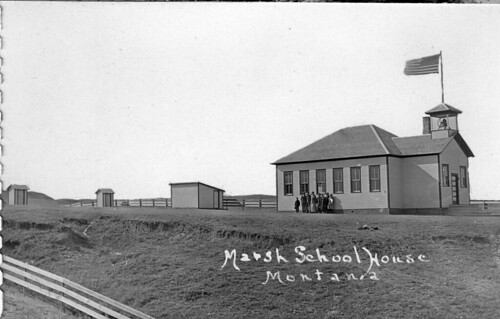
Marsh School House, 1914.
About forty years ago, a former editor for Time-Life books, Donna Lucey, found Evelyn’s entire collection of work in the basement of Evelyn’s friend Janet Williams of Terry. Lucey later wrote the best biography introducing Cameron’s work to the public: Photographing Montana: the Life and Work of Evelyn Cameron.

For more of Evelyn’s fascinating story, visit this blog entry at Shades of the Departed.
Sources for photographs, in order:
Self Portrait Kneading Bread, Montana Historical Society; Portrait on horse: this one is available several places online and I don’t know the original source; Self portrait with camera, University of Montana Museum; Milwaukee Railroad Workers, 1910, Montana Historical Society; Marsh School House, 1910, original source unknown; Book cover: Mountain Press.
sallymandy
posted by Barbara (aka Sallymandy) at Chronologie Fine Vintage.
Who Loves Jane Birkin?
Now, I’m not too familiar with Jane Birkin’s music or acting careers. And I know that in her younger years she was often photographed without any clothes at all.
But I love her fashion sense of today.
Here are some photos of her middle-age wardrobe – photos that have lessons for all of us about “appropriate,” yet youthful, clothing.
Neutrals in quality fabrics…
Monochromatic classics with a subtle menswear vibe.
Comfort and playfulness…
And, finally, the best accessories: A wide smile and a feeling that she doesn’t take herself too seriously.
Have a great Tuesday!
sallymandy
doing business as Chronologie Fine Vintage
Stanley Kubrick’s Fashion Photography
Lingerie fashion shoot, LOOK Magazine, 1949 (click photo for credits)
Before he became a producer of such iconic films as Dr. Strangelove and 2001: A Space Odyssey, Stanley Kubrick was a freelance photographer. His early work included fashion photography.
Kubrick was still in high school in Manhattan when he sold his first series of fashion photographs to LOOK magazine. He continued to work for LOOK during his twenties and up until the time he made the switch into film.
Woman Seated in Chair While Another Woman Models a Dress, LOOK Magazine, 1949 (click photo for credits)
On a photo shoot for LOOK, caught in the mirror of showgirl Rosemary Williams, 1949 (New York Times, click photo for credits)
Working for LOOK, 1949.
Enjoy!
Sallymandy
Plus Size Vintage Dresses -- Gallery of Favorites
Who doesn't love a pretty vintage dress? They're affordable, eco-friendly, and perfect for your individual style. Check out these great plus size choices from vintage sellers on Etsy.
They range from size XL to 3X. (Note that vintage means older than 20 years.)
click photos for details.
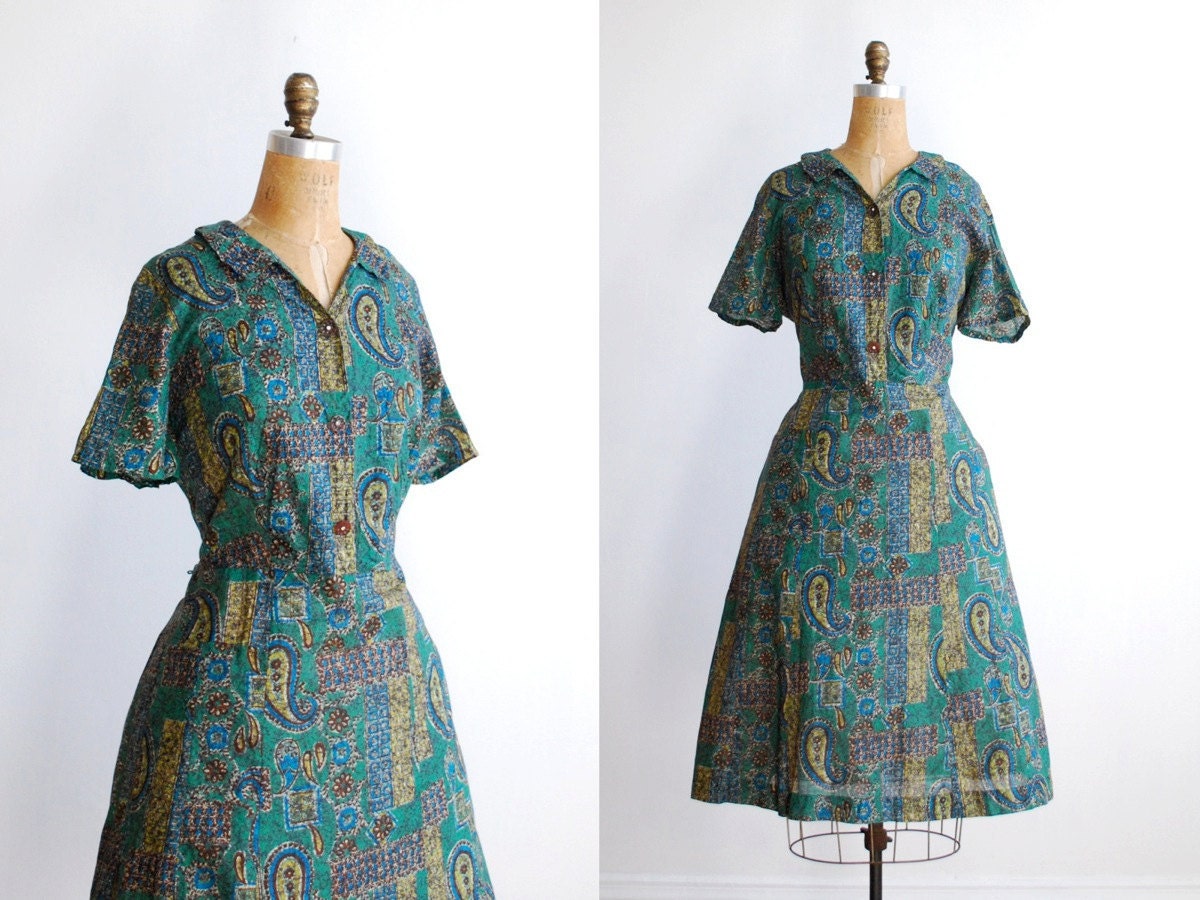 vintage 1950s plus size... $98.00 | 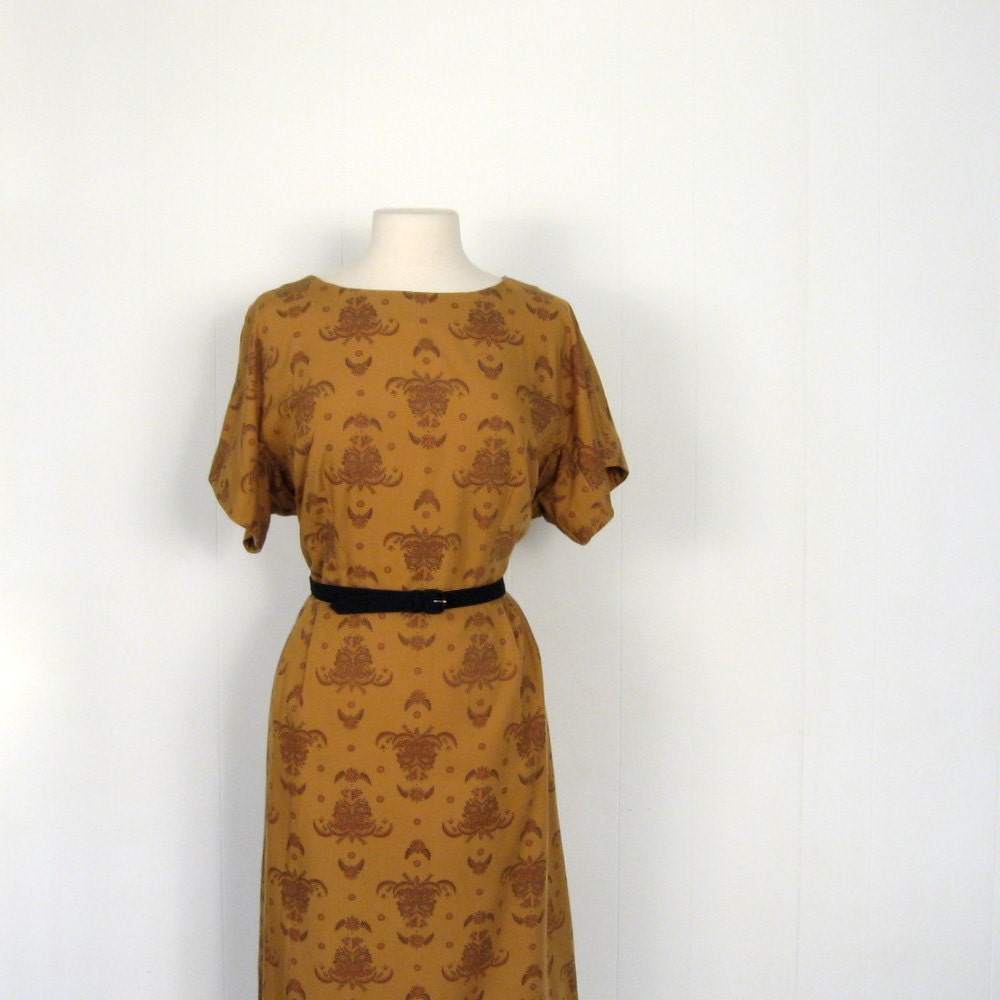 1950s Dress / Folkloric... $46.00 | 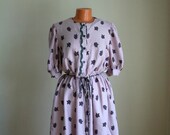 vintage 70s dress - LAV... $36.00 |
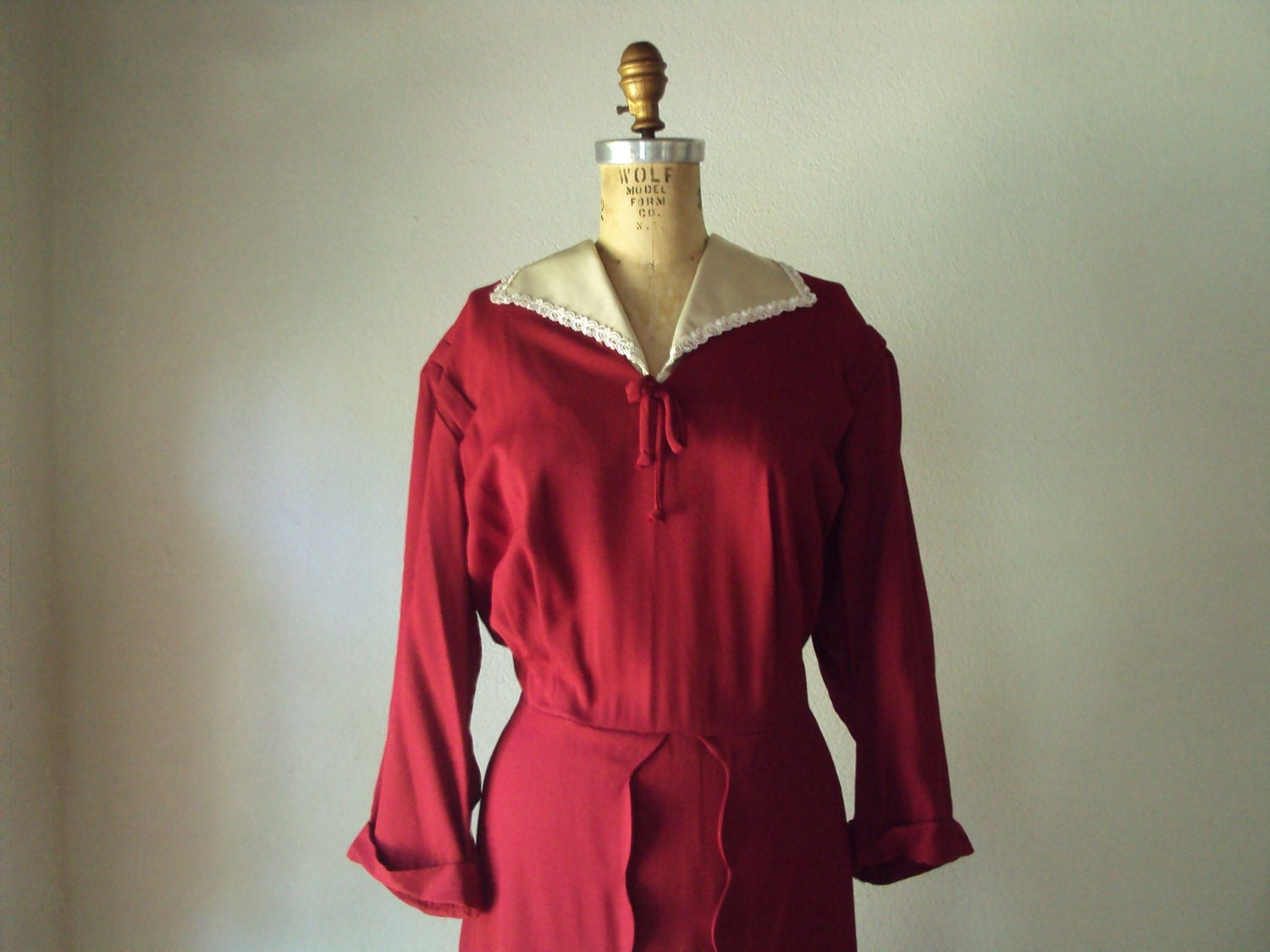 vintage 1940s plus size... $148.00 | 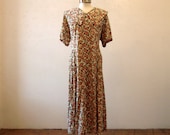 Vintage 90s Plus Size D... $32.00 | 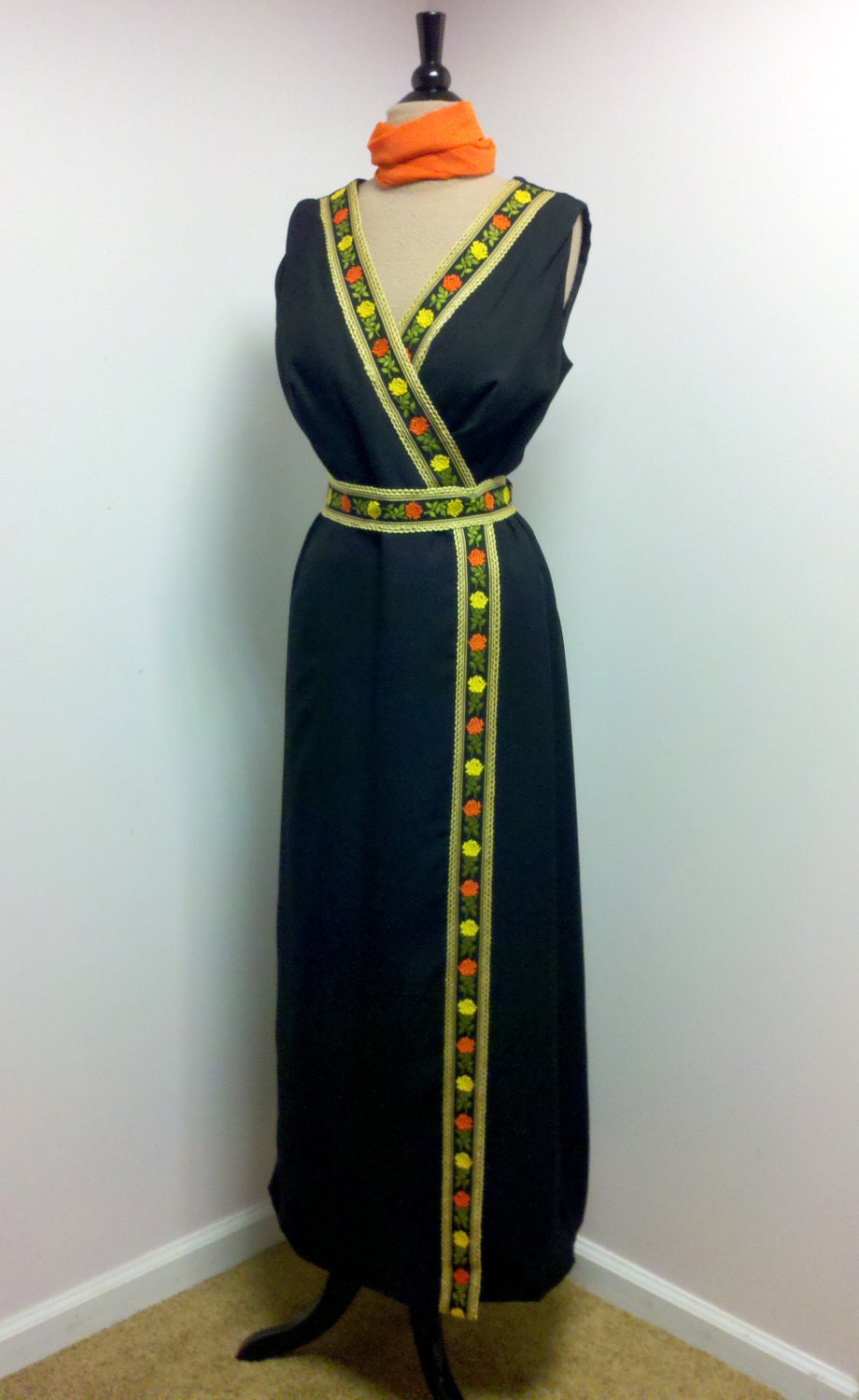 Vintage 1960s Plus Size... $79.00 |
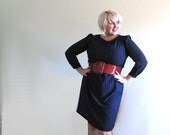 The Pinstrip President ... $65.00 | 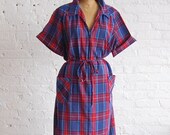 plus size dress. belted... $34.00 | 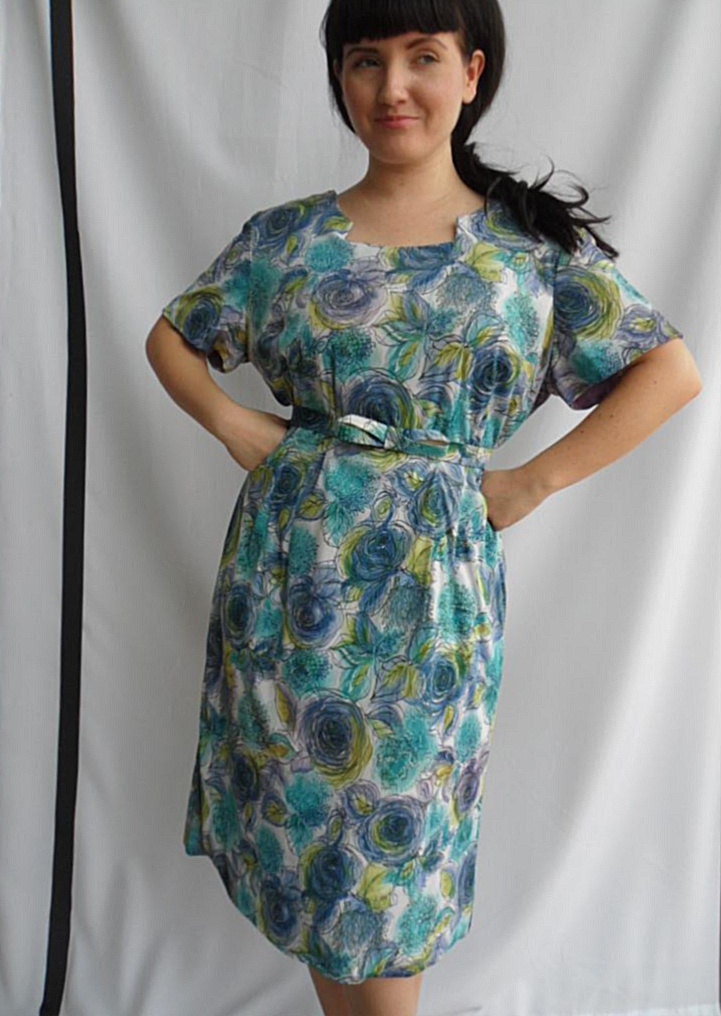 Vintage 1960s Plus Size... $54.00 |
 Plus size 1960s Red Pip... $28.00 |  1960s Handmade Picnic D... $51.00 | 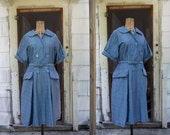 1950s Blue Day Dress / ... $44.00 |
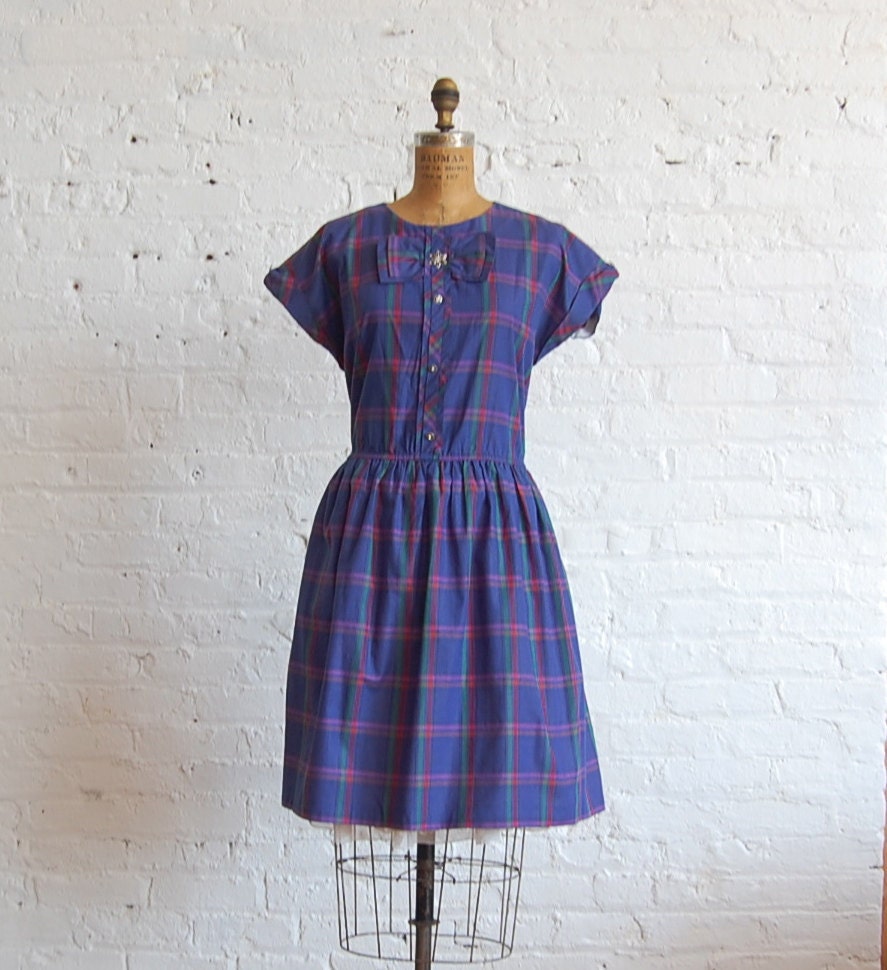 plaid plus size party d... $46.00 | 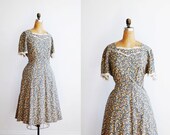 vintage 1940s dress // ... $78.00 | 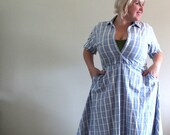 Autumn Picnic - Dress- ... $65.00 |
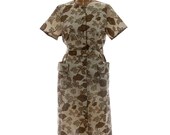 |


































